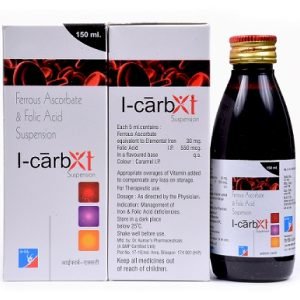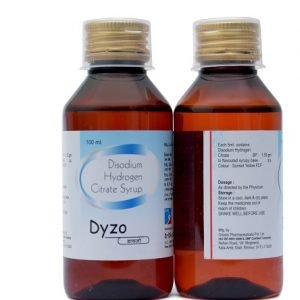Description
MECHANISM OF ACTION: Cefpodoxime, a third-generation semi-synthetic cephalosporin, exhibits activity against several gram-positive as well as gram negative microorganisms. This compound is also stable in beta lactamase environment. Cefpodoxime exhibits exceptional activity against methicillin susceptible staphylococci, streptococcs pneumonia, haemophilus influenza, nesseria spp, and moxaxella catarrhalis, which are referred to as most common hospital acquired and community acquired infections. Clavulanic acid is a natural inhibitor of beta-lactamase, which is produced by streptomyces clavuligerus. It binds to beta lactamase moieties and inactivates them, thus restricting the cefpodoxime destruction. Clavulanic acid has very little antimicrobial activity.
PHARMACOLOGY
CEFPODOXIME PROXETIL
ABSORPTION: Bioavailability of cefpodoxime is 50% in fasting subjects and it increases in the presence of food. Peak plasma concentration of cefpodoxime 200mg single dose is 2.18mcg/ml.
DISTRIBUTION: The drug is well distributed after oral administration. Cefpodoxime reaches therapeutic concentrations in the respiratory tract and genitor-urinary tracts and bile.
PROTEIN BINDING of cefpodoxime ranges from 20 to 30%.
HALF LIFE: The plasma half-life of cefpodoxinme is 2-3 hours and its prolonged in patients with impaired renal function.
ELIMINATION: Cefpodoxime is excreted unchanged in the urine.
CLAVULANIC ACID:
ABSORPTION: Clavulanic acid is well absorbed after oral administration. Peak plasma concentration of clavulanic acid 125mg single dose is 2.2mcg/ml.
DISTRIBUTION: it is distributed completely after the oral administration.
PROTEIN BINDING: -of clavulanic acid is about 30%.
HALF LIFE: The plasma half-life of clavulanic acid is one hour
ELIMINATION: About 60% of clavulanic acid is excreted unchanged in the urine.
INDICATIONS:
- Acute bacterial exacerbations of chronic bronchitis
- Acute community-acquired pneumonia
- Upper and lower respiratory tract infections
- Skin and soft tissue infections
- Urinary tract infections
- Pharyngitis and/ or tonsillitis
- General gonorrhoea (men and women) and rectal gonococcal infections (women)
- Acute maxillary sinusitis













